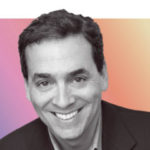 The information you can glean from tracking a single attendee at one of your meetings or conventions covers a lot of ground: details about her company and career, the vendors she visited, the products she most buzzed over, what she thought were your best breakout sessions, her online conversations with peers, meetings she had on site, and any questions she asked of presenters. Now multiply that data by the thousands or tens of thousands for a large event. And that’s only counting the information you might collect at the meeting itself, to say nothing of pre- and post-event feedback.
The information you can glean from tracking a single attendee at one of your meetings or conventions covers a lot of ground: details about her company and career, the vendors she visited, the products she most buzzed over, what she thought were your best breakout sessions, her online conversations with peers, meetings she had on site, and any questions she asked of presenters. Now multiply that data by the thousands or tens of thousands for a large event. And that’s only counting the information you might collect at the meeting itself, to say nothing of pre- and post-event feedback.
Throughout every one of your conferences, vast amounts of information are flowing on everything from attendance patterns to purchasing preferences to venue costs. But the ability to capture this type of “big data” and convert it into a usable form is a challenge that meeting professionals are just starting to tackle. Apps, software platforms, and other new technologies are making it easier than ever to collect information and turn it into actionable data. But some experts say the meetings industry has been slow to adopt these solutions.
“The biggest issue our industry has as it pertains to data analysis or data insight of any kind is asking the right questions or knowing what the questions are,” said Dave Lutz, CMP, managing director of Velvet Chainsaw Consulting and a columnist for Convene. “Data is already being collected, we’re just not always analyzing it properly.”
TMI? NO SUCH THING
Over the last few years, the buzz over big data has increased, with conferences devoted to dissecting its uses and articles exploring how to deal with the information streaming into databases everywhere. Although the definition of big data can be fluid, the term generally refers to the collection of expansive amounts of information that can be hard to handle without automation and new technology tools.
By ignoring big data, meeting organizers are missing out on considerable information that can help them do everything from monetize feedback to boost attendance, according to Brian Silverman, president and CEO of Pleasanton, Calif.-based NiceMeet-ing, a one-year-old company that helps conference attendees more fully engage with educational content by letting them view presentations, take notes, and send online questions to speakers via their mobile devices. From a data standpoint, Silverman said, NiceMeet-ing software can record all those notes, questions, comments, and online chats between attendees.
By ignoring big data, meeting organizers are missing out on considerable information that can help them do everything from monetize feedback to boost attendance.
So what are associations and other organizations doing with that type of information? Using it to market products, attract attendees to future conferences, and detect trends, said Matthew Stein, global content manager for Cisco Customer Conferences, who is involved in producing the annual Cisco Live conference four times a year in cities around the world. At Cisco Live in Orlando last June, 20,000 attendees in 750 sessions asked more than 2,600 questions using a privately developed mobile platform similar to NiceMeeting. (The company has since abandoned that platform and will be using NiceMeeting at Cisco Live in Milan this month.) Cisco also used radio frequency identification (RFID) chips inside each attendee’s badge to track the sessions they went to and the vendors they visited.
The data collected provides the opportunity to improve Cisco Live every year. By looking at note-taking during breakout sessions, Stein said, he hopes to determine when people were particularly engaged — or not. During a keynote presentation, for example, Cisco could evaluate when attendees stop taking notes and point out to speakers where they lost audience attention. Similarly, online evaluations provide feedback on speakers and sessions, allowing Stein to predict what attendees will want in future lineups. “This is all about allowing people to engage, and once they engage I can measure that,” Stein said. “In the future, I can measure a speaker based on how engaged the audience was.”
Cisco also uses data collected at registration and via communication and marketing contacts throughout the year to help attendees select the programs best suited to their interests. With more than 700 sessions to choose from, this can be critical to boosting attendee satisfaction with Cisco Live. The company uses an online model, similar to Netflix and Amazon, Stein said, that recommends sessions based on an attendee’s declared topics of interest and other information to create a conference “curriculum” of sorts. All that analysis takes time, he said, but “companies will start to realize that the value of the analysis is to make sure you’re serving up what people want.”
That said, Cisco tends to shy away from marketing individually to attendees based on what they do online related to a conference. So, even if someone happens to mention in a Cisco Live online forum that a particular product looks good, Cisco may not directly target that person with a pitch for that product. “We’re very careful with their personal information,” Stein said. “They may not want a salesperson calling them up. If we don’t approach it that way [and instead send targeted pitches], people will obfuscate themselves, which would make the data less reliable.”
CONNECTING THE DOTS
But Mike Stiles, a senior corporate events manager for Adobe Systems, said that individual leads generated from the data that comes out of his company’s live events — including the annual Adobe Summit digital marketing conference, which draws about 5,000 attendees — are so valuable that “we have massive teams to mine through that data and see where the opportunities are.” For example, Adobe — which uses a suite of data-collection tools from Active Network — might note that an attendee owns three Adobe products but went to a session on an alternate product. Sales and marketing would follow up to provide additional information. Also, Adobe monitors customers’ interests in particular products and topics all year long, and then can guide them to related sessions at a conference. “It increases the chances of making a sale to that individual,” said Anthony Miller, vice president of strategy for Active Network’s Business Solutions Group. “It also adds value to the attendee. They’re getting a personalized communication based on what they are interested in.”
But the analysis of all this data isn’t always direct, Stiles said. An executive may go to a session on social media at Adobe Summit, and that might not generate much interest from Adobe’s sales team. But a closer look could reveal that person is the director of digital marketing at a company growing 50 percent per year, using only Adobe tools except for its social-marketing campaign. That’s an opportunity it’s important not to miss. “The connecting of the dots matters,” Stiles said.
Getting consistency of data is key.
One of the biggest challenges throughout this year-long collection of data from customers and attendees is standardization of the information that gets entered into Adobe’s massive databases, Stiles said. Without that, anything that gets collected is not as accurate or usable. “The bigger the organization, the more ways there are to enter information,” Stiles said. “Getting consistency of data is key.”
So far, this parsing of data to garner sales leads is mostly done through labor-intensive people hours, but Stiles says he sees a different future. “The holy grail,” he said, “is going to be automated marketing [directly to individuals] and marketing campaigns.”
Christopher Dwyer, a research director at Ardent Partners, an advisory group that works in the area of supply management for conferences, thinks that bringing a wider-angle focus to the marketing and attendee-experience side of events is what will take big data to the next level in the industry. Using that data to evaluate what he called the “emotional return on investment” for a meeting, for example, is something Dwyer calls “a fantastic concept” — tracking to what extent the meeting resonated with attendees by looking at online evaluations and post-event discussions, reporting sales and new contacts that were facilitated, and so on. “Knowing how effective or great a meeting was in terms of quality and effectiveness and being able to apply that to next year’s event… goes a long way for planning,” Dwyer said. “Emotional ROI is big.”
‘VERY POWERFUL INFORMATION’
Perhaps the biggest potential for big data at meetings and conferences comes through the increasing use of social networking by attendees, exhibitors, speakers, and other participants. Data collected from such platforms can provide significant information to meeting professionals, with new technology tools tapping into the social networking that often precedes or follows an event. And once attendees register, they can access their own profile in the conference’s online community, send messages to other attendees, schedule private meetings, comment in community discussions, and watch vendor videos — all of which is capturable data, according to Jonathan Bray, senior account executive with Pathable, which creates exclusive online communities for event organizers.
You can provide some of that data to exhibitors and sponsors, including the number of visits an attendee makes to individual conference pages online. “When you’re having a conversation about sponsorship for the following year, you can tell the sponsor how much activity they had related to other sponsors,” Bray said. “This is very powerful information.”

In addition, Pathable can track online traffic to the page created for each individual breakout session and determine which session handouts or slides are being downloaded in advance of the meeting. That can help organizers set their agenda appropriately, according to Pathable CEO Jordan Schwartz. Plus, during the run-up to a conference, organizers maybe able to detect that some sessions don’t appear to be generating as much interest and can retool them accordingly. Likewise, attendees may register for certain sessions, but the more valuable information might be which session pages they’re actually viewing ahead of time, which can help with scheduling. For example, organizers may not want to schedule two popular sessions competing in the same time slot. “If you have two popular sessions going head-to-head,” Schwartz said, “you maybe losing an opportunity to deliver maximum value and content.”
If you have two popular sessions going head-to-head, you maybe losing an opportunity to deliver maximum value and content.
The American Society of Anesthesiologists (ASA) used Pathable this past October at its 2013 annual meeting in San Francisco, which attracted about 16,000 attendees, said Jeff Schultz, ASA’s convention and conferences manager. Through the mobile app and online community, attendees networked, talked about sessions before and during the conference, created and downloaded their own personal schedules, and visited exhibitors’ pages. ASA was also able to embed its conference evaluation into the online community and each session page, which boosted the number of evaluations received from about 11,000 when the paper version was used for previous conferences to 28,000 in 2013.
Schultz said he’ll use that and other data collected to help plan future conferences and to see if any topics need to be added or expanded. In addition, the data that ASA has collected through Pathable technology has given the organization more information it can share with advertisers and exhibitors. “We can show our exhibitors that there is traffic there, that people are using this,” Schultz said. “We can show them which exhibitor logo or company was clicked on the most.”
WHERE THE MONEY GOES
Big-data technology can collect information in another hugely important area as well: budgeting. Active Network’s platform records venue costs, hotel-room rates, catering expenses, audiovisual investment, travel fees, and just about any other line item associated with your events — large and small, on a global scale. “You can start to see how much you spend with a particular hotel group, for example,” Miller said. “You can negotiate significant annual savings.”
You can also compare your events locally or globally, see whether one area of costs seems too high, and accurately plan for expenses the following year. James Vachon, CMM, associate director of events, meetings, and conventions for the Takeda Pharmaceuticals International Company, said Takeda is launching a global initiative to streamline purchasing using Active tools. The company is looking at using that data to negotiate with suppliers on all conference-related areas — from hotel rooms to transportation services — to lower costs. Vachon said he expects to save about 20 percent on meeting and convention expenses by using data effectively. “We want to streamline the process of purchasing, establishing best practices,” he said. “We want to be more efficient in how we do this.”
Similarly, Paul Wakelin, formerly a global deployment manager for IBM, now in a different position for the company, deployed Active software for a data project that standardized IBM’s meetings and events procurement process. Over a period of years, IBM collected data for the majority of gatherings it held around the globe, ranging from those with 10 attendees up to the annual 10,000-attendee IBM Pulse conference in Las Vegas.
This massive amount of data provided important insight into spending trends and areas for possible savings, allowing IBM to zero in on whether a particular department seemed to be spending more than others on events, or whether certain conference expenditures in a particular country seemed out of line. “You can have a global view,” Wakelin said. “You can see the data on a department level, across countries and regions.” Armed with that information, it’s easier to negotiate better rates with hotels and other suppliers. “More knowledge is power,” Wakelin said, “and you’re able to gain a better deal with that.”
DATA DRIVEN
That’s what big data can do for your meetings and events. But not everyone thinks the industry is at the forefront when it comes to adoption. “We’re on the very starting edges of the whole phenomenon,” said David Rich, senior vice president of strategy and planning worldwide for George P. Johnson Experience Marketing. “There are some early adopters, but we’re still in the beginning stages.”
Mike Maturo, a managing partner at Infotonic, who works with high-tech companies to improve their conferences, said he sees resistance to big data. “The data is difficult to use and difficult to gather,” he said, “and some people might feel it threatens their jobs.”
And Marie Hunter, senior director of meetings, conferences, and events for IEEE, said that even though the industry is starting to collect large amounts of information related to events, it still doesn’t approach the more traditional definition of “big data” on a vast scale. When it does, making that information usable is going to take people with specialized abilities. “The folks who interpret this data need to be experts in both the data analysis and the subject matter itself,” Hunter said. “Those are skill sets that don’t currently exist.”
Nevertheless, Rich says he sees “tremendous value” in pursuing the collection of large amounts of information — to understand patterns of attendee behavior, better predict what attendees want from an event, and more accurately target marketing and sales efforts. “We’ll see a continuation of the trend in which the analytical capability for using big data becomes more usable and affordable,” Rich said. “It’s already starting to happen.”
Test Time



